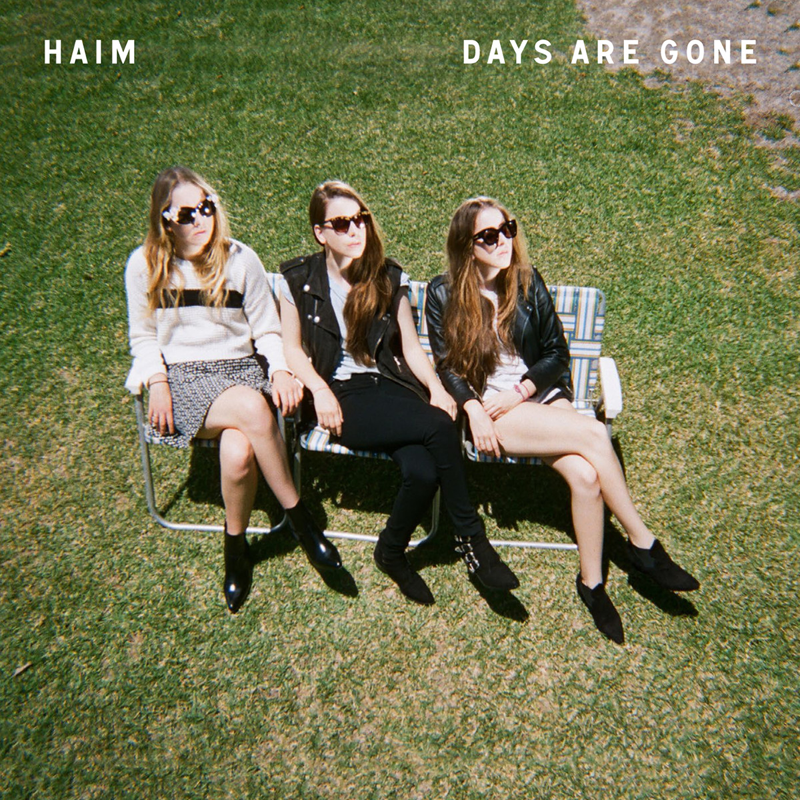For fans of SoCal-bred trio HAIM, it certainly doesn’t feel like this group of sisters only just released their debut album.
The piece of work collectively known as Days Are Gone, which HAIM has been working on for six-some odd years, is a compilation of tracks that anyone in the age range of early teens to the baby boomer generation is sure to enjoy.
Like many great albums, what makes this new album such a marvel is its ability to be nostalgic for the past yet fresh in its sound and ideas.
However, this record seems to have executed that idea better than almost any other in the music world right now, and its current spotlight in the music media is most definitely serving it well.
Be that as it may, this group of young sisters didn’t create a top-charting record in both the U.K. and the U.S. out of the blue.
Danielle, Este and Alana Haim have been creating music together since they were little girls in their family band called Rockinhaim.
They later performed with a short-lived all-female group called The Valli Girls.
But as they grew up and slowly detached themselves from both those acts, these sisters began to stake their claim in the alternative and independent music scene.
They’ve crossed paths and worked with prominent bands such as Phoenix, Vampire Weekend, Arctic Monkeys and The Strokes.
But these relationships appear to have done much more for HAIM than just attract attention.
When listening to Days Are Gone, a little dabble of influence from each of these aforementioned bands can be heard in any given track, from the pop tempos to the crisp lyrics to the high-pitched guitar riffs.
It’s hard to find a “chick band” today quite like HAIM.
Most critics claim that Stevie Nicks is the best comparison to each of these sisters, and in my opinion, they are not far off from the truth.
The album’s opening track, “Falling,” is composed of confident and deep, yet feminine voices reminiscent of the young Nicks in Fleetwood Mac tracks like “Gypsy.”
A few tracks later is “Honey & I,” a slower-paced, breathy song that is light on the drums, similar to Fleetwood Mac’s “Never Going Back Again,” from the Mac’s most famous album, Rumours.
Not to mention, one of HAIM’s first songs in the music atmosphere was a cover of “Hold Me,” recorded for the Fleetwood Mac tribute album, Just Tell Me That You Want Me.
So although “vintage” may seem like a good adjective to describe this band, I think “eclectic” does it better.
Though the hippie aura of Stevie Nicks is definitely the most salient likeness to the work this band has created, tracks such as “The Wire,” which rivals Lana Del Rey’s “Summertime Sadness” for best current melancholy-pop song, combine a heavy voice of lead singer Este channeling an inner Diana Ross alongside her sister Danielle’s daintier, Sheryl Crow-like voice.
Meanwhile, their track “Don’t Save Me,” in the same album, sounds nothing like any of the previously mentioned tracks – and that’s the beauty of this band.
Not many artists can create a song that sounds like Leona Lewis vocals over the instrumentals of a Duran Duran song and really make it work.
The chorus of the song, which welds track overlays with quick, confident lyrical repetitions, can surely send goose bumps over any sane person’s body.
And though this number seems dissimilar to the others on the album, it shares a noteworthy feature with many of its neighboring tracks.
This unity comes from the presence of harmonies and counterpoints between all three girls’ very different voices that creates the enrapturing feminine reverberation most notorious to this group.
Having said that, it is true that HAIM as a band has still yet to become as “notorious” as their musical counterparts.
But after playing in the UK’s premier Glastonbury Festival this year, receiving multiple spreads in magazines like Rolling Stone, topping BBC’s “Sound of 2013” poll and creating an album that The Huffington Post has dubbed “endlessly, impossibly and intoxicatingly listenable,” they surely have a glistening future ahead of them.
– By Alana Pockros
The Emory Wheel was founded in 1919 and is currently the only independent, student-run newspaper of Emory University. The Wheel publishes weekly on Wednesdays during the academic year, except during University holidays and scheduled publication intermissions.
The Wheel is financially and editorially independent from the University. All of its content is generated by the Wheel’s more than 100 student staff members and contributing writers, and its printing costs are covered by profits from self-generated advertising sales.







There is certainly a lot to know about this issue. I love all of the points you’ve made. BTW, Are you earning substantial income online from your site? For hundreds of thousands of people like me internet may be the major revenue stream. I don’t just build a weblog, I love developing a web business out of my every site. If you are also looking for ways to increse your online revenue than I request you to visit the CashClub.info website to discover the secret methods of building niche site to earn income as high as $28,512 Per Month Online. Regards
Hеy! Do you know if they make any plugins to help with SЕO?
I’m trying to get my blog to rank for some targeted keywoгds
but I’m not seeing very good results. If you know of any please
ѕharе. Thanks!